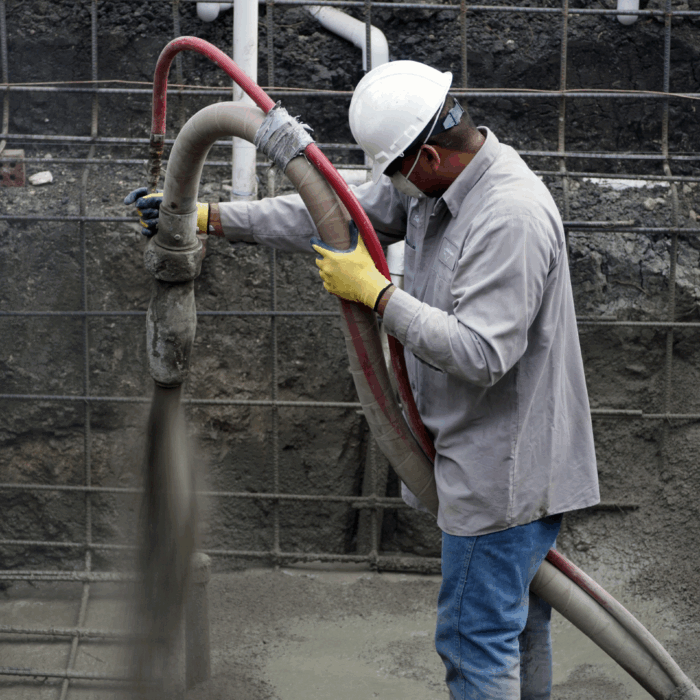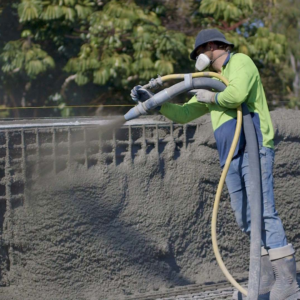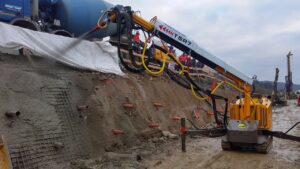Dry Mix vs Wet Mix Shotcrete: What Contractors Need to Know

When planning your next concrete spraying project, understanding the difference between wet mix and dry mix shotcrete is essential. Contractors often ask which method delivers the best results. The answer depends on the specific requirements of your job site, material handling capabilities, and finish expectations.

Dry mix shotcrete
Dry mix shotcrete (also known as gunite), involves mixing dry materials on-site and adding water at the nozzle. This method allows for greater control of water content and is especially useful in remote or hard-to-reach locations. It reduces material waste and allows operators to stop and start without affecting the mix. The nozzleman adjusts the water content in real-time so the application is easily fine-tuned to achieve optimal performance and finish. It is also convenient when working with bagged material, which is broken and emptied directly into the machine hopper.
One of the biggest advantages of dry mix shotcrete is versatility. It is ideal for applications such as slope stabilisation, mining tunnels, swimming pools, and refractory linings. Because the materials are dry until they reach the nozzle, there is less risk of setting inside delivery lines, meaning easier cleaning and fewer clogs.
Operators using dry mix shotcrete appreciate the high degree of control over the mix and the ability to monitor and adjust performance on the fly. Additionally, equipment like the Gunite Equipment & Supply C-10 gunite machine is built specifically to maximise dry mix shotcrete efficiency, with rugged durability suited for tough environments.
From a cost and maintenance perspective, dry mix shotcrete often proves more efficient for smaller or stop-start jobs. Its reduced water usage and ability to start and stop easily make it more adaptable on sites where timelines may change or work areas are confined.

Wet mix shotcrete
In contrast, wet mix shotcrete involves pre-mixing all materials, including water, and then pumping the slurry through hoses to the nozzle. Air is added to the material line which allows spraying (‘shooting’) of the material. Wet mix shotcrete provides a consistent mix and can be quicker for large-scale applications. However, it also comes with limitations: once mixed, the material must be used within a short time, and any leftover mix can lead to waste.
CGS Equipment offers specialised shotcrete pumps from trusted European brands, Clever & Co and Turbosol. Many of our more ‘standard’ concrete pumps and plaster pumps can also be slightly modified to enable shotcrete spraying.
Want to learn more about the difference between dry mix and wet mix shotcrete? Our expert team is available to speak with you today.
The American Shotcrete Association is also a good reference.

